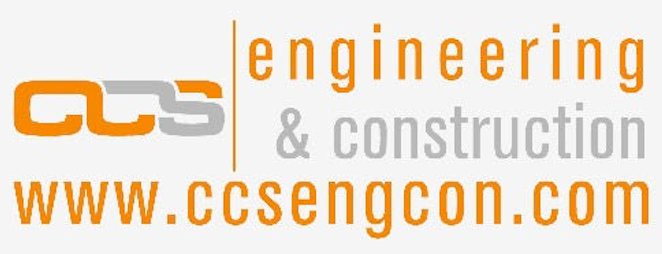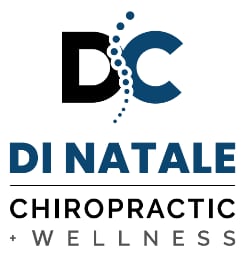Tecumseh Pickleball Association Membership (TPA) includes access to 2 Locations**
- The Royal Canadian Legion #261 Open Jan.- Dec.
2 indoor courts, 12326 Lanoue St., Tecumseh. For more information and rental fee see schedule tab.- Zekelman Pickleball Complex Open April - Nov.
10 outdoor courts, at 590 Lacasse Blvd., Lacasse Park, Tecumseh
OUTDOOR ORGANIZED PLAY STARTING MAY 1 Membership Required
2026 Registration for current TPA memberships is now open. Membership is $60 per person (plus Pickleball Canada and Pickleball Ontario fees). We're capping membership at 800 players so don't delay - spots will go fast!
- If space allows. Wait list Players will have the chance to register starting November 29th.
**Renew or wait list: Click here: https://pickleballcanada.org/membership/join-renew
Hours
- Mon. - Friday 8:30 a.m. - 1 p.m.
- Saturday 9:00 am - 12:30 pm
- Evenings: Monday, Tuesday, Thursday 6:00 pm - 8:30 p.m.
-
OPEN PLAY - DROP IN: $5.00 please see schedule below for Open Play Hours
** You will need a Key to play outside TPA time. You can purchase at the Rec Office at Tecumseh Arena. TPA Member cost is $20.00. Non member cost is $35.00. This will give you access to additional time at the Zekelman Pickleball Complex and Shawanoe Park.
- At Zekelman Complex, Tecumseh Pickleball Association (TPA) Membership includes:
- Discounts on tournaments, lessons, boot camps, drill clinics, socials, etc. …
- In-house tournaments
- Teaching court for tips-coaching to enhance your level
- 2 practice walls by the TPA Clubhouse
- Access to 2 indoor courts at The Royal Canadian Legion, check schedule tab for more information.
Open Play using “NextUp Paddle Racks” Don’t worry about finding three other people. All you simply need to do is show up with your paddle! When you arrive at the courts, look for the white board at the entry for court assignments according to these three (3) divisions…
- Recreational (Just Starting Out–to 2.5)
- Intermediate (3.0)
-
Advanced (3.5+)
This creates the order of “next to play” on the next open courts. If you wish to play with a friend, simply keep you paddles together.
TPA will communicate changes asap in 3 ways: email, Facebook, GPN and on our website. The TPA executive reserves the right to change court rules.
Information on how to rate yourself:
Note: Above the 2.0 level, all levels should be able to demonstrate most of the skills for their level plus most of the skills from preceding levels. Thus a 2.5 level player, for example, demonstrates most skills in the 2.5 level list as well as most skills in the 2.0 level list, and so on.
- 2.0 Skill Level
- Moves in a balanced and safe manner
- Getting at least 50% of serves in the service court and returning 50% of serves
- Are learning where to stand on court during serves, returns and point play but are still not comfortable with some positions
- Knows the two bounce rule and applies it during games
- Can keep score comfortably
- Will have basic ground strokes with a very limited use of backhand, overhead, and volley
- Capable of keeping ball in play for a couple of shots.
- 2.5 Skill Level
- Knows the basic rules including the “two bounce rule”, scoring
- Attempting to control forehand groundstroke (direction, depth, height over net)
- Attempting backhand groundstroke
- Getting 60% of serves in the service court and returning 60% of serve returns
- Knows where to stand as the server, server’s partner, and receiver
- Consistently Approaches the non-volley line for volleys
- Can keep the ball in play for longer lasting rallies
- Sometimes lobs with forehand
- Attempting to dink the ball at the net, can do so for short durations
- Moves in a safe and balanced manner
- Developing good hand-eye coordination.
- 3.0 Skill Level
- Knows basic rules including how to keep score
- Developing control on forehand groundstroke (placement, direction, depth)
- Developing control on backhand groundstroke (placement, direction, depth)
- Getting 70% of serves and return of serves “in”
- Striving to place serves deep into the court
- Beginning to develop placement of serves
- Uses deeper and higher returns of serve to allow time to approach the net
- Approaches the non-volley line quickly rather than staying back
- Sustains a short volley session at the net
- Exhibits correct court positioning for doubles and how to “move as a team”
- Beginning to use the forehand lob with some success
- Developing a sustained “dink” exchange at the net
- Attempting to hit a soft ”drop shot” to approach the net (3rd, 5th, etc shot)
- Attempting to adjust to differing ball speeds (hitting & returning)
- Has good mobility
- Developing good hand-eye coordination.
- 3.5 Skill Level
- Knows all the main rules including how to refigure the score and correct server
- Demonstrates control on forehand groundstroke (direction, depth and pace)
- Demonstrates some control on backhand groundstroke (direction, depth and pace)
- Getting 80% of serves and return of serves “in”
- Regularly placing serves deep into the court
- Regularly uses deeper & higher returns of serve to allow time to approach net
- Approaches the non-volley line quickly (when appropriate) rather than staying back
- Able to play with partners effectively
- Beginning to use court strategies such as partner communication and team coverage of court
- Avoids hitting “out” balls
- Hitting the ball lower over the net consistently
- Developing a wide variety of shots with some consistency
- Learning when to use soft shots vs. power shots to their advantage
- Developing consistency on shot placement, including ability to create and hit “gaps”
- Sustains a short volley session at the net with some control and placement
- Initiates and maintains a sustained “dink” exchange at the net
- Able to execute a soft ”drop shot” to approach the net (3rd, 5th, etc shot)
- Able to adjust to differing ball speeds consistently
- Developing ability to hit overheads with control
- Using a forehand and backhand lob when appropriate
- Developing patience in rallies
- Has good mobility
- Has good quickness
- Has good hand-eye coordination.
- 4.0 Skill Level
- Controls and places 90% of both serves and returns of serves
- Consistent and dependable forehand and backhand groundstrokes, including directional control, depth, placement and pace
- Consistent and dependable volleys, including some directional control, depth, placement and pace
- Consistent and dependable overheads, including some directional control, depth, placement and pace
- Has good accuracy in placing lobs
- Consistently makes successful ”drop shots” from the back court to approach the net (3rd, 5th, etc shot
- Regularly initiating and sustaining a “dink” exchange at the net until a “put away” shot is received
- Able to change from a soft shot strategy to a hard shot strategy, and vice versa
- Can block and return hard volleys
- Developing the ability to return overheads hit at their feet
- Can handle speed on shots without over-hitting or hitting out of bounds
- Moves effectively with partner, easily switching courts and communicating when required
- Can control play at the non-volley zone line, keeping their opponents back, driving them off the line and controlling the speed or placement of the ball
- Consistently uses shots to create and hit “gaps”
- Recognizes and exploits the weaknesses in their opponent’s game
- Can poach effectively
- 4.5 and 5.0 Skill Level
- The 4.5 player is distinguished from the 4.0 player by increased skills, a higher level of strategy, quickness of hands, judicious use of power, superior placement of shots and consistently fewer unforced errors
- The 5.0 player is even more consistent in all skills than the 4.5 player with very few, if any, unforced errors. > All players are encouraged to familiarize themselves with these skills. Whether it is to identify the skills they already have or those they need to achieve the next level.
















